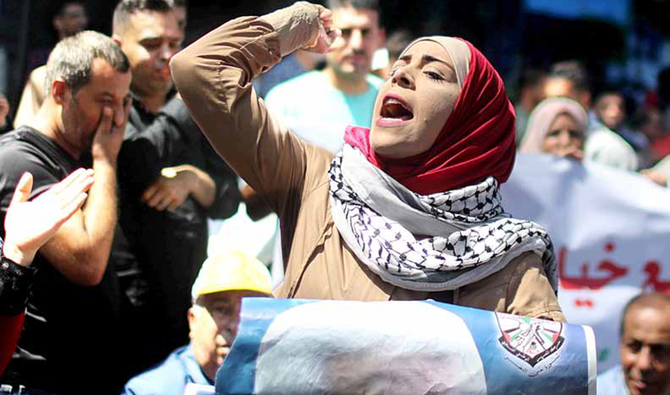JERUSALEM: Israeli warplanes bombed the Hamas-ruled Gaza Strip overnight after Palestinians fired a rocket into southern Israel, the army said.
The latest exchange came as Israel warned Hamas it was risking “war” by failing to stop fire balloons being launched across the border.
Egyptian security officials shuttled between the two sides in a bid to end the flare-up, which has seen more than a week of rocket and fire balloon attacks from Gaza and nightly Israeli reprisals.
“Earlier tonight, a rocket was fired and during the day, explosive and arson balloons were launched from the Gaza Strip into Israeli territory,” said a military statement released shortly before midnight.
In response, “fighter jets and (other) aircraft struck additional Hamas military targets in the Gaza Strip.
“During the strike, a military compound belonging to one of the special arrays of the Hamas terror organization was struck,” the English-language statement added. There were no reports from Gaza of casualties.
Israeli President Reuven Rivlin issued a warning to Hamas during a visit Tuesday to firefighters in southern Israel who said they were called out to 40 blazes caused by Gaza arson balloons during the day.
“Terrorism using incendiary kites and balloons is terrorism just like any other,” Rivlin told them, according to a statement from his office.
“Hamas should know that this is not a game. The time will come when they have to decide ... If they want war, they will get war,” said Rivlin, whose post is largely ceremonial.
Israel and Hamas have fought three wars since 2008.
Despite a truce last year backed by Egypt, the United Nations and Qatar, Hamas and Israel clash sporadically, with Palestinian incendiary balloons or rocket or mortar fire drawing retaliatory Israeli strikes and sanctions against civilians in Gaza.
A Hamas source told AFP the Islamists had held talks with the Egyptian delegation in Gaza on Monday before it left the territory for meetings with the Israelis and the West Bank-based Palestinian Authority.
The Egyptian delegation was expected to return to Gaza after those talks were concluded, the source added.
In response to the persistent balloon launches, Israel has banned fishing off Gaza’s coast and closed the Kerem Shalom goods crossing, cutting off deliveries of fuel to the territory’s sole power plant.
Power had been in short supply even before the shutdown, with consumers having access to mains electricity for only around eight hours a day. That will now be cut to just four hours a day using power supplied from the Israeli grid.
The plant’s spokesman Mohammed Thabet announced its “complete shutdown” on Tuesday after its fuel ran out.
For the rest of the time, those Gazans who can afford it rely on solar panels, or generators, which also need fuel.
Gaza security sources and witnesses said Tuesday’s strikes hit Hamas lookout posts at Rafah in the south of the territory and Beit Lahia in the north.
Israeli police said that a balloon came down in the yard of a home in the town of Sderot, which is within walking distance of the Gaza border and a frequent target for attack.
It caused some damage but no casualties, a police statement said.














